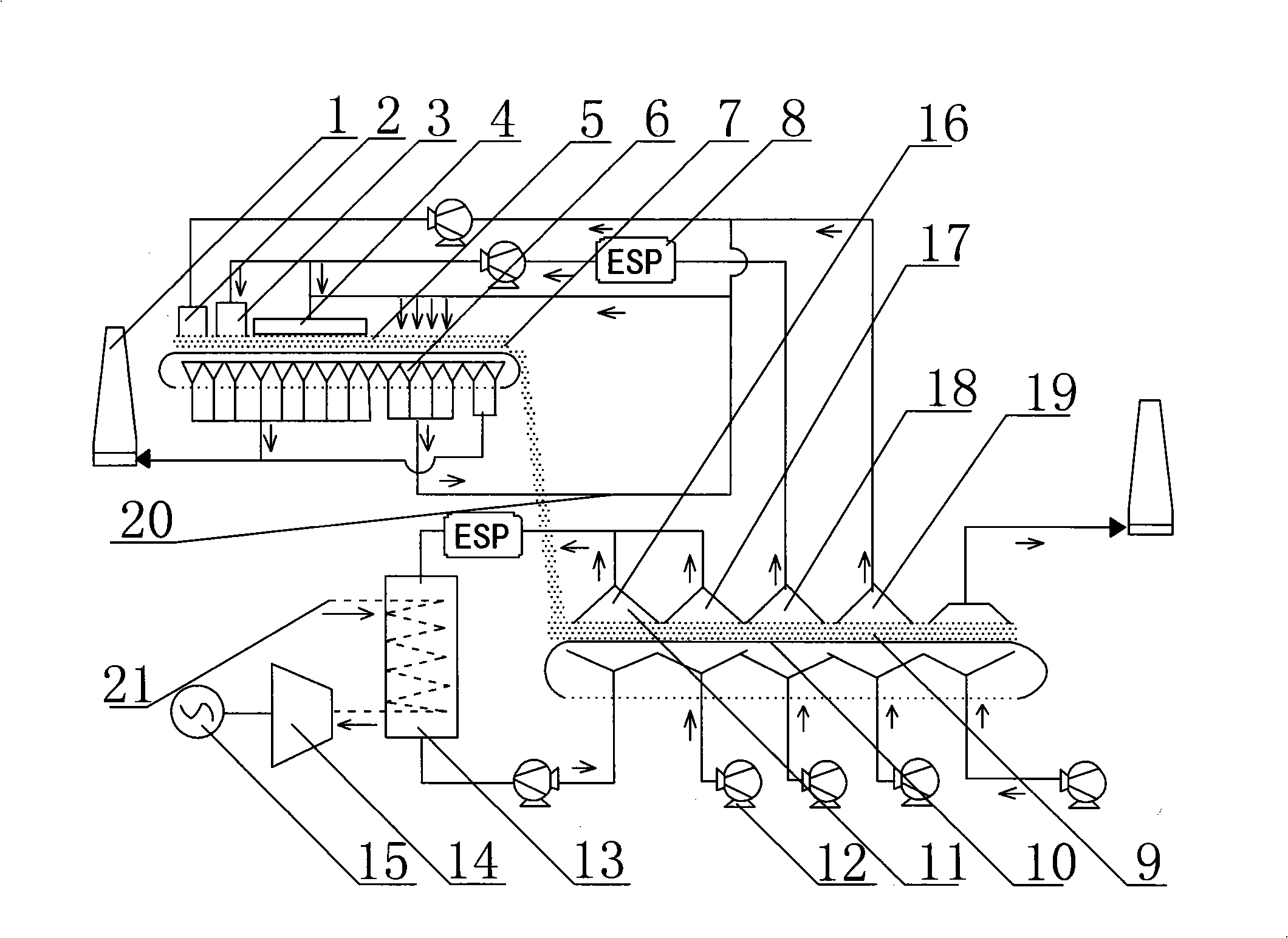Classification recovery and step utilizing method of residual heat resources in sintering process
A technology of sintering process and waste heat, which is applied in the direction of waste heat treatment, energy industry, and energy efficiency improvement. It can solve the problems of disconnection between recovery and utilization, low recovery and utilization rate of sintering waste heat, and low level of control and regulation, and achieve efficient recovery and utilization. Effect
- Summary
- Abstract
- Description
- Claims
- Application Information
AI Technical Summary
Problems solved by technology
Method used
Image
Examples
Embodiment Construction
[0017] The main content of the present invention is: firstly, the two kinds of waste heat resources of cooling waste gas and sintering waste gas are recovered in stages, and then the recovered waste heat of various grades is used in stages under the premise of giving priority to improving the sintering process conditions: Power recovery is the first choice for high waste heat, that is, it is passed into the waste heat boiler to produce high-quality steam and generate electricity; direct heat recovery is performed on low temperature waste heat, that is, it is used for hot air sintering, preheating and drying sintering raw materials, and as combustion air for ignition furnaces, etc.
[0018] The first is the principle of sintering waste heat recovery and utilization: the sintering waste heat is first used for direct heat recovery to improve the sintering process conditions, and then used for power recovery. The main form of direct heat recovery is: hot air sintering, that is to g...
PUM
 Login to View More
Login to View More Abstract
Description
Claims
Application Information
 Login to View More
Login to View More - R&D
- Intellectual Property
- Life Sciences
- Materials
- Tech Scout
- Unparalleled Data Quality
- Higher Quality Content
- 60% Fewer Hallucinations
Browse by: Latest US Patents, China's latest patents, Technical Efficacy Thesaurus, Application Domain, Technology Topic, Popular Technical Reports.
© 2025 PatSnap. All rights reserved.Legal|Privacy policy|Modern Slavery Act Transparency Statement|Sitemap|About US| Contact US: help@patsnap.com

